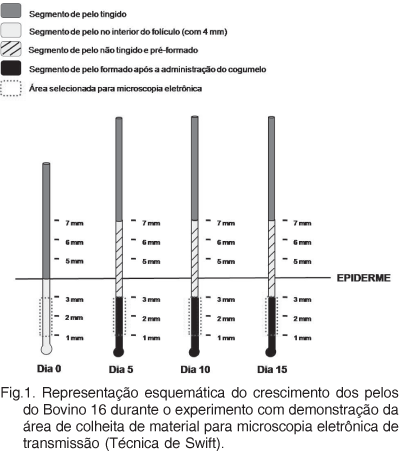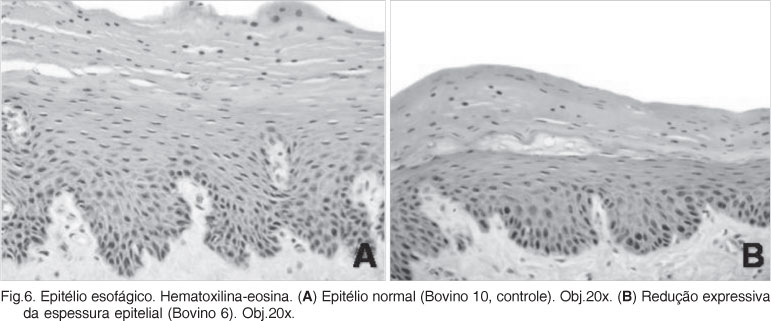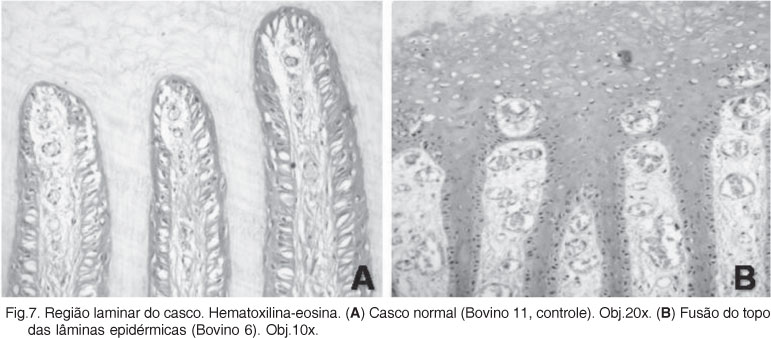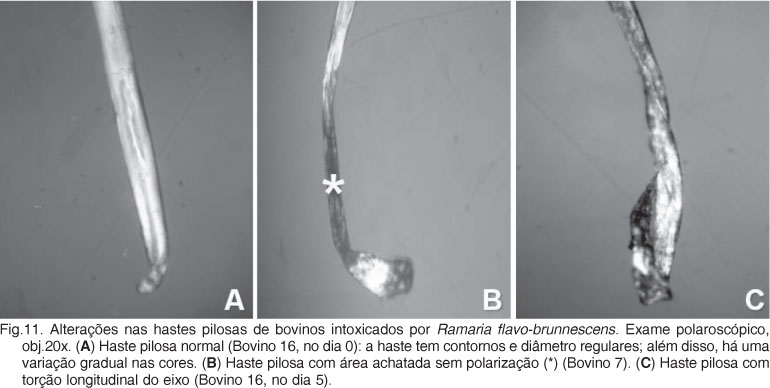The pathogenesis of the lesions of Ramaria flavo-brunnescens poisoning in cattle was studied throughout the retrospective evaluation of selected tissues from nine spontaneous and four experimental cases of the disease. The pathogenesis of lesions observed in the tongue, esophagus, hoof, and tail was investigated analyzing microscopic lesions, histochemical and histochemical-ultrastructural changes. Histochemical techniques utilized were Masson's Trichrome and Selective Oxidation of Keratin (SOK). The histochemical-ultrastructural study was acomplished throughout the Swift method under transmission electron microscopy. Hair shafts of the tip of the tail were analyzed under polarized light. Lesions of varying degrees of severity were observed. All changes observed in the keratinized structures studied, mostly in the hard keratin, showed defective keratinization. The morphologic study and the results obtained with SOK and Swift techniques showed that the defective keratinization results of low amounts of sulphur containing amino acids (cystine) in hard keratin structures. This is probably the main pathogenetic mechanism of the lesions observed in R. flavo brunnescens poisoning in cattle.
Poisonous plants; mushroom poisoning; Ramaria flavo-brunnescens; cattle; keratinization; veterinary pathology















